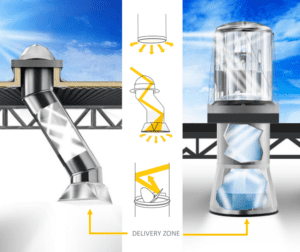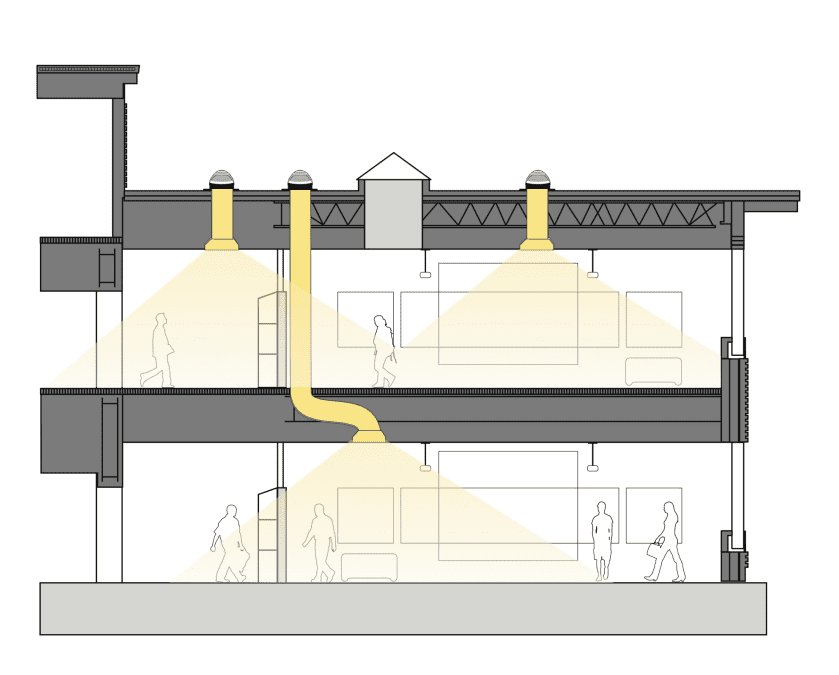What are Tubular Daylighting Devices (TDDs) and How Do They Work?
Natural daylight has been proven to increase office workers’ performance and productivity. Tubular daylighting devices (TDDs) use a rooftop dome to capture the sun’s rays and transmit them inside a building, bringing natural sunlight – minus the harmful ultraviolet and infrared rays – into the gloomiest of indoor spaces. But have you ever wondered how they work, and whether they would be a good fit for your commercial space?
A Little Space for a Lot of Light
Tubular daylighting devices’ compact size – from 14” to 29” in diameter in commercial buildings – makes them easy to install and they occupy very little space in most roofing systems. The smaller size also makes it easier to avoid any interfering with built-in roof features like drains or vents. The dome’s curved shape means it catches sunlight from all directions, which is then transmitted inside the building through highly reflective tubing, bringing beautiful, natural daylight into your interior space.
Sunshine Underground
The best TDDs out there can transmit daylight deep into a building’s darkest recesses – reaching areas beyond the wildest dreams of even large commercial skylights. This can be achieved due to the highly malleable nature of their reflective tubing, which can be bent to create “elbow joints” along the way. In this way, it can maneuver around most obstacles in the building plenum space – such as plumbing, HVAC, or electrical – and transfer the light across multiple rooms through diffusers. The level of light in a room can then be controlled with dimmers or supplemented with electric light, as needed. TDDs can deliver liveable levels of sunlight across tube lengths of 100 feet or more!

Sunshine For All Seasons
Unlike commercial grade skylights, TDDs draw the sunlight inside your building, and they simultaneously repel the full intensity of the heat these rays bring with them. How is this possible? The dome uses a Fresnel lens design to draw the light inside. It’s also worth noting that a TDD won’t interfere with air conditioning, because of their multiple layers of glazing, providing thermal protection. On the other hand, in a freezing Midwest winter, TDDs’ minimal size and incursion of a building mean they cause nominal heat loss, compared to commercial skylights. And unlike commercial skylights, TDDs are leak-proof!
Daylight Specialists offers a range of the highest quality tubular daylighting devices and other daylighting solutions on the market. We are happy to answer any questions you have about TDDs and to talk you through the options that would best suit your commercial spaces.
If you are interested in learning more about TDDs, we offer an AIA-accredited presentation, “Introduction to Tubular Daylighting Devices (TDDs),” that we can present to your team. Reach out to us today for more information!

